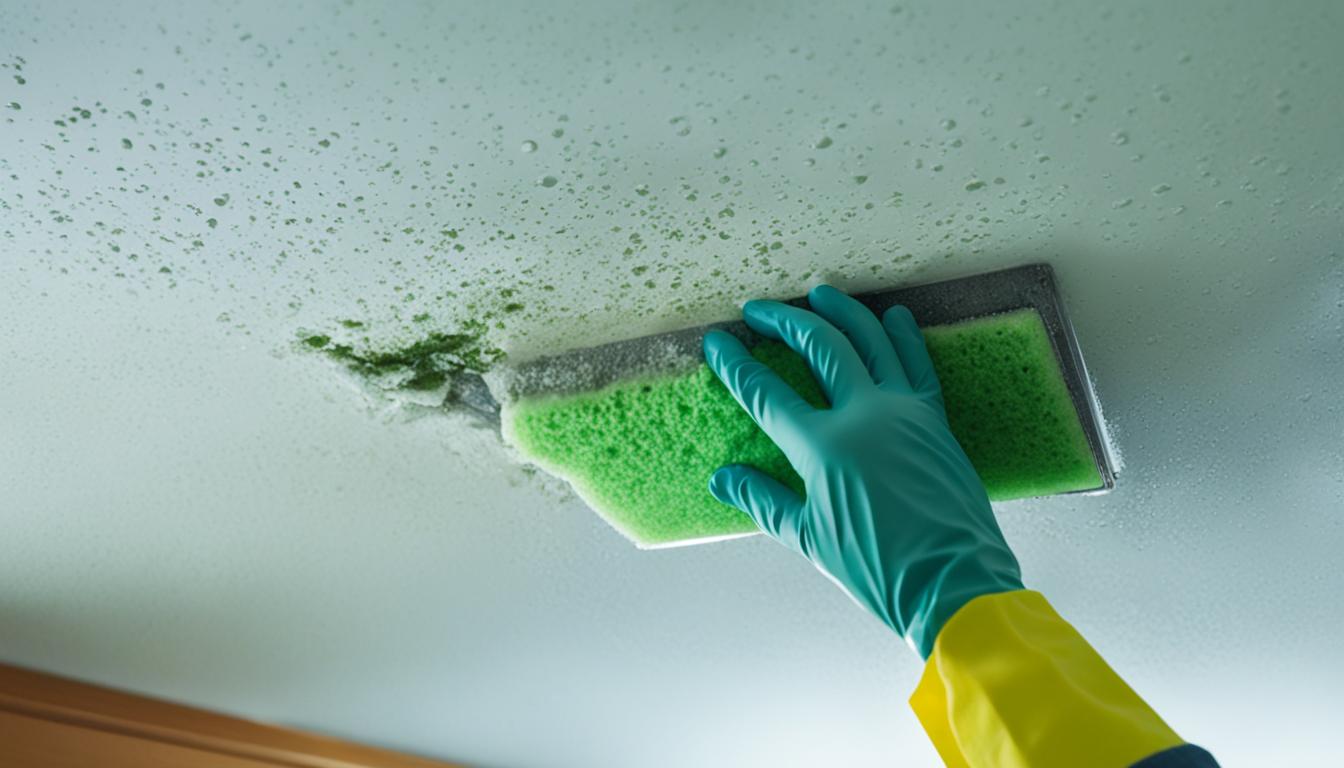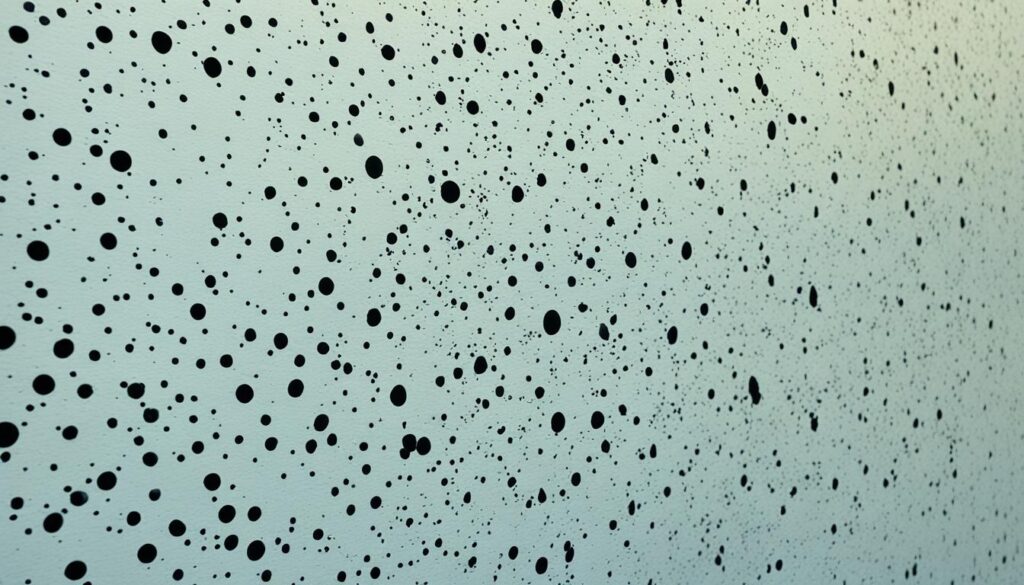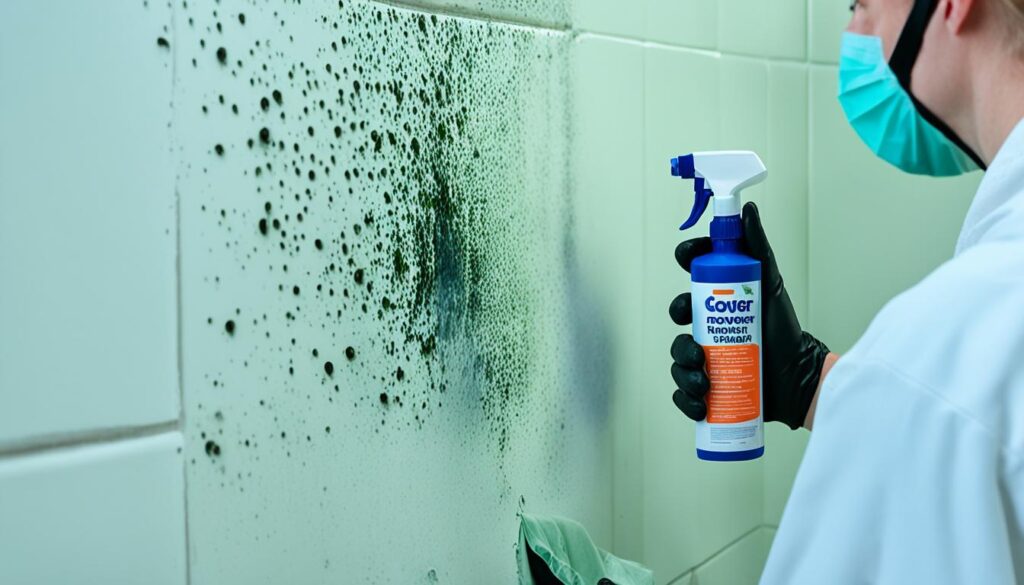
Mold Removal for Sore Throat Relief | Expert Tips
Welcome to our comprehensive guide on mold removal for sore throat relief. In this section, we will provide expert tips on cleaning mold to improve indoor air quality and alleviate household mold-related sore throats. Mold remediation is an essential step in creating a healthier living environment, and we have everything you need to know to effectively tackle this issue.
Key Takeaways:
- Cleaning mold can help alleviate sore throat symptoms.
- Mold remediation is crucial for improving indoor air quality.
- Prompt mold removal is essential to eliminate household mold.
- Regular mold assessments are important for maintaining a healthy living environment.
- Effective prevention measures can reduce the risk of recurring mold issues.
Understanding the Impact of Mold on Sore Throats
When it comes to the health of our respiratory system, mold can have a significant impact, particularly on sore throats. In this section, we will explore the relationship between mold and sore throats, highlighting the importance of mold inspection, identification of common types of mold like black mold, and evaluating the potential health risks associated with toxic mold exposure.
The Importance of Mold Inspection
Before understanding the impact of mold on sore throats, it is crucial to prioritize mold inspection in our living spaces. Regular mold inspection allows us to identify the presence of mold and take necessary measures for its removal and remediation. A professional mold inspection helps in detecting hidden mold, assessing the extent of mold growth, and determining the underlying causes.
Identifying Common Types of Mold
Among the various forms of mold, black mold is a common offender when it comes to sore throats. Black mold, scientifically known as Stachybotrys chartarum, thrives in damp and humid conditions, making it prevalent in areas such as bathrooms, basements, and poorly ventilated spaces. Identifying the presence of black mold is essential, as it tends to produce mycotoxins that can worsen respiratory symptoms, including sore throats.
Evaluating Health Risks of Toxic Mold Exposure
Exposure to toxic mold can pose severe health risks, including throat irritation and inflammation. Toxic molds such as Aspergillus and Penicillium release mycotoxins, which can cause allergic reactions and respiratory ailments, leading to persistent sore throats. Individuals with weakened immune systems, allergies, or pre-existing respiratory conditions are particularly susceptible to the adverse effects of toxic mold exposure.
Knowledge of the type and extent of mold growth in your living environment is crucial for effectively addressing sore throat symptoms and improving overall respiratory health.
To better understand the impact of mold on sore throats, we need to acknowledge the significance of mold inspections in identifying mold presence, recognize the prevalence of black mold as a potential trigger for sore throats, and understand the health risks associated with toxic mold exposure.
| Mold Inspection Importance | Identification of Common Types of Mold | Evaluation of Health Risks |
|---|---|---|
| Allows for early detection of mold | Identifies prevalence of black mold | Understand the effects of toxic mold |
| Assesses extent of mold growth | Recognizes mold’s role in sore throats | Safeguards against respiratory ailments |
| Addresses underlying causes of mold |

Effective Mold Remediation Techniques for Sore Throat Relief
Mold can have a significant impact on indoor air quality and can contribute to various health issues, including sore throats. In this section, we will explore effective mold remediation techniques that can help alleviate symptoms and improve overall well-being.
Preventing Mold Growth
Prevention is the first line of defense against mold. By implementing these proactive measures, you can create an environment that is less hospitable to mold:
- Control humidity levels: Use dehumidifiers in areas prone to moisture, such as basements and bathrooms. Keep indoor humidity below 50% to inhibit mold growth.
- Fix leaks promptly: Repair any plumbing issues, roof leaks, or other sources of water intrusion as soon as they are identified.
- Proper ventilation: Ensure adequate ventilation in bathrooms, kitchens, and other areas with high moisture levels. Use exhaust fans or open windows to allow fresh air to circulate and prevent moisture buildup.
Cleaning Mold Safely
If you discover mold in your home, it’s important to clean it promptly and effectively to prevent further health issues:
- Protective gear: Before starting the cleaning process, equip yourself with protective gear, including gloves, goggles, and a mask, to minimize exposure to mold spores.
- Containment: Isolate the affected area to prevent the spread of mold spores to other parts of the house. Close doors and cover vents with plastic sheeting.
- Cleaning solutions: Use commercial mold cleaners or create a solution of water and detergent to clean moldy surfaces. Scrub the affected areas thoroughly and ensure they are completely dry.
- HEPA vacuuming: After cleaning, use a vacuum cleaner with a HEPA filter to remove any remaining mold spores from carpets, upholstery, and other soft surfaces.
- Disposal: Discard any materials that cannot be effectively cleaned, such as porous items like carpets and insulation.
Maintaining Good Indoor Air Quality
Aside from mold prevention and cleaning, maintaining good indoor air quality is essential for preventing mold growth and alleviating sore throat symptoms. Consider the following tips:
- Air purification: Use air purifiers with HEPA filters to remove mold spores and other pollutants from the air.
- Regular cleaning: Dust and vacuum your home regularly to minimize the presence of dust mites and other allergens that can aggravate sore throats.
- Proper ventilation: Open windows and doors when weather permits to allow fresh air to circulate and reduce moisture buildup.
- Monitor humidity levels: Use a hygrometer to measure indoor humidity levels and take appropriate action to maintain levels below 50%.

By implementing these mold remediation techniques, you can effectively prevent mold growth, clean mold-infested areas, and maintain good indoor air quality. This will not only alleviate sore throat symptoms but also create a healthier living environment for you and your family.
Conclusion
In conclusion, understanding the connection between mold and sore throats is crucial for maintaining a healthy living environment. Regular mold assessments are essential to identify and address mold issues promptly. By conducting mold assessments, you can detect the presence of mold and determine the extent of the problem.
Once mold is identified, it is important to follow expert tips for mold remediation to improve indoor air quality and alleviate sore throats. Cleaning mold using appropriate techniques is vital to remove the mold spores and prevent further growth. This includes thorough cleaning of affected areas, ensuring proper ventilation, and using recommended mold remediation products or professional services.
Furthermore, preventing the growth of mold is key to avoiding recurring sore throats. This includes maintaining proper humidity levels within your home, addressing any water leaks or moisture issues, and implementing effective ventilation systems in areas prone to high humidity. By taking proactive measures to prevent mold growth, you can reduce the risk of sore throat symptoms caused by mold exposure.
In summary, by prioritizing mold assessment, remediation, and prevention, you can create a healthier living environment and alleviate sore throat discomfort. Remember, if you suspect mold growth or experience persistent sore throat symptoms, it is always advisable to consult with mold remediation professionals for a comprehensive evaluation and effective solutions.




